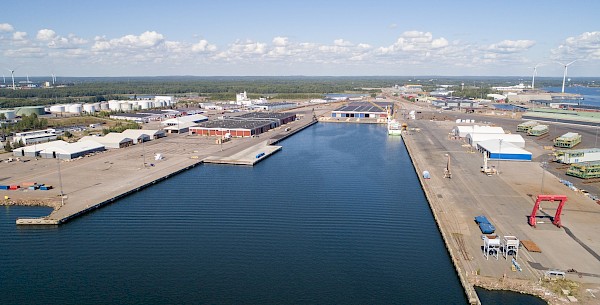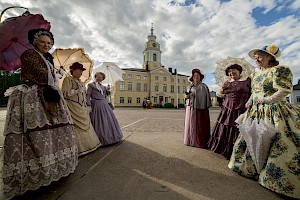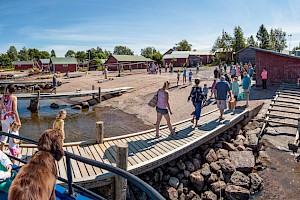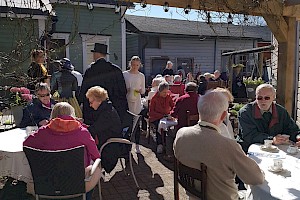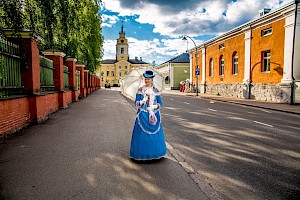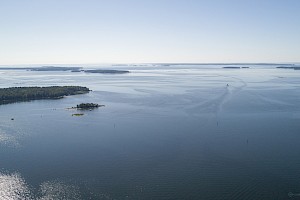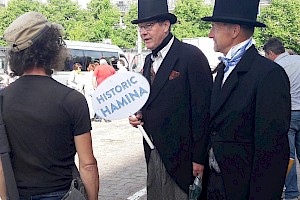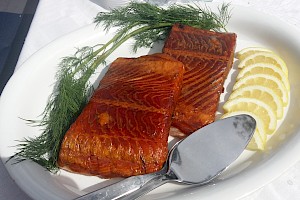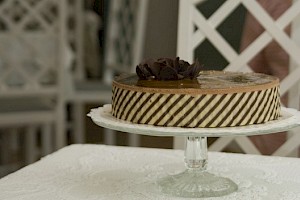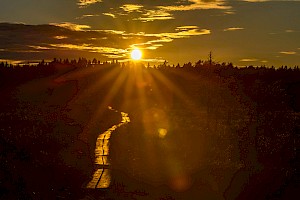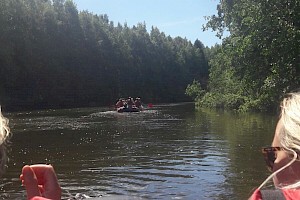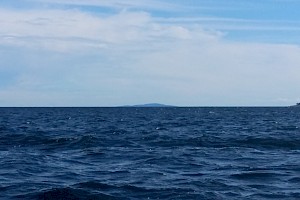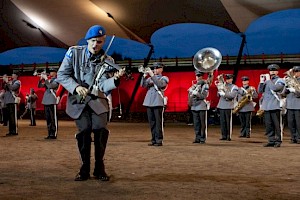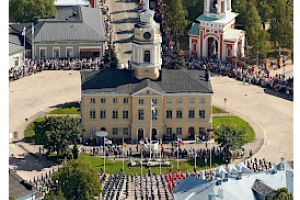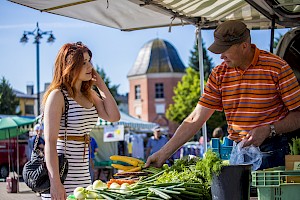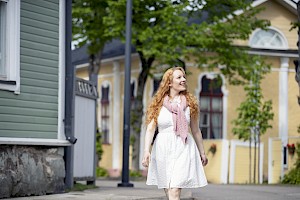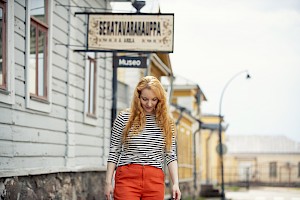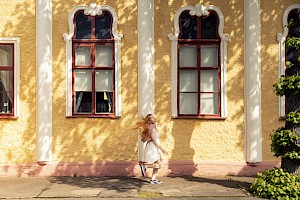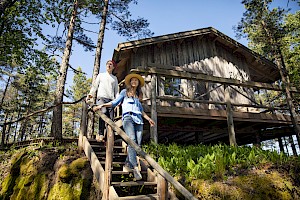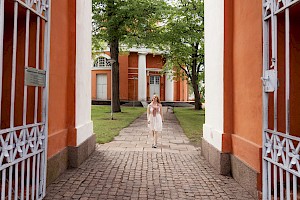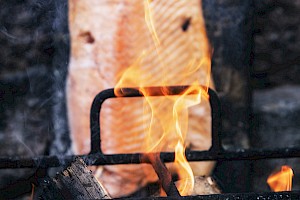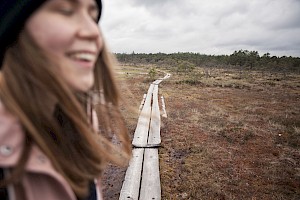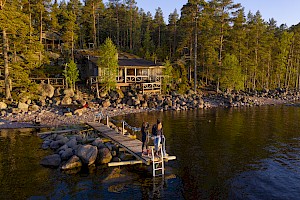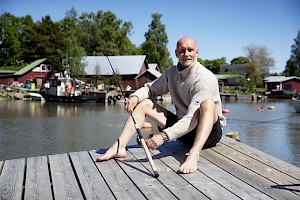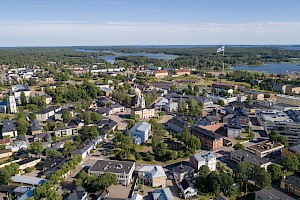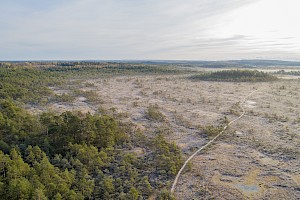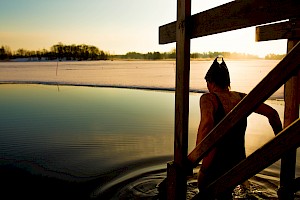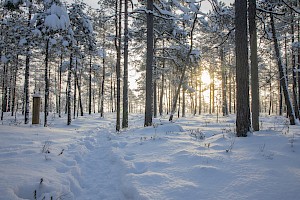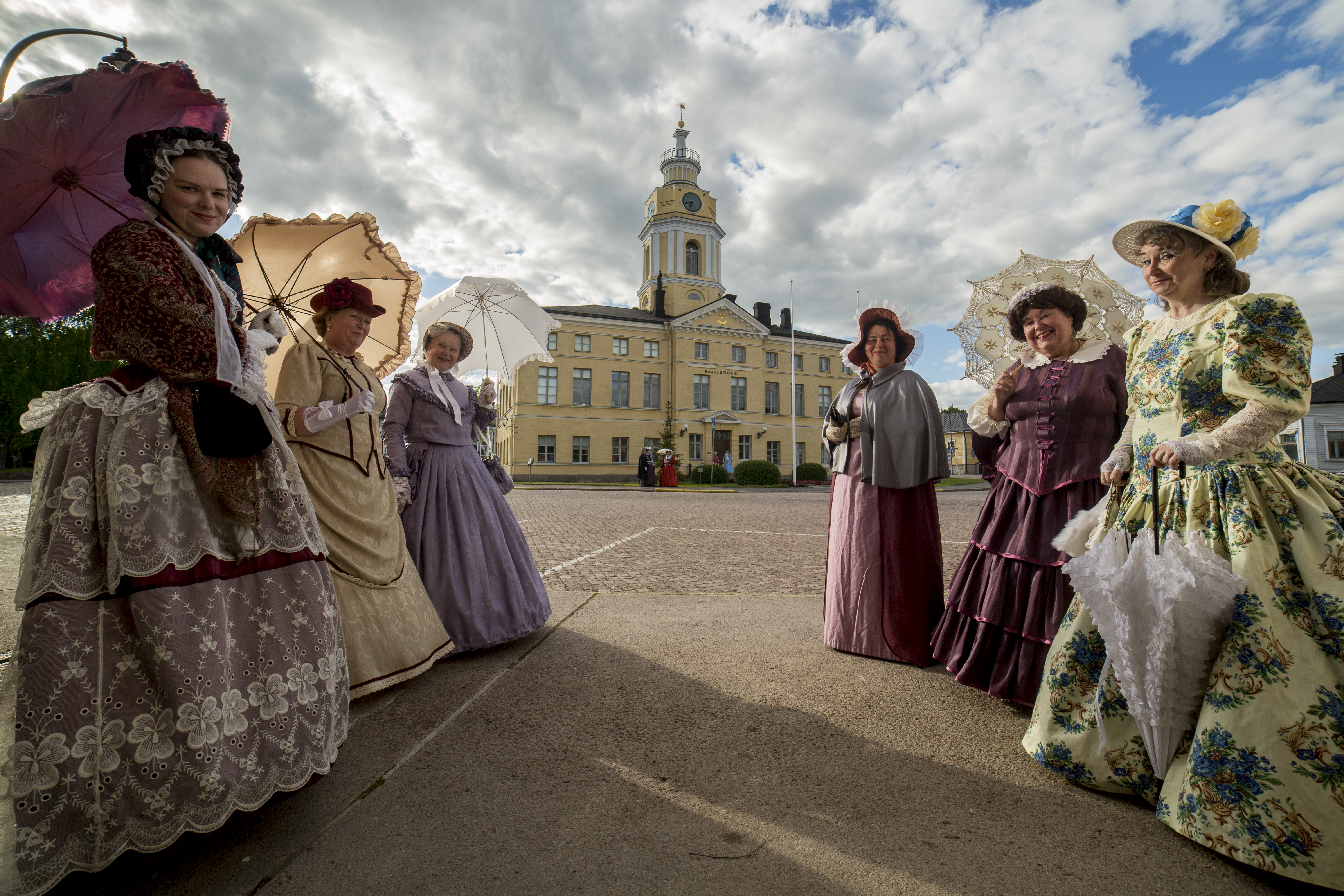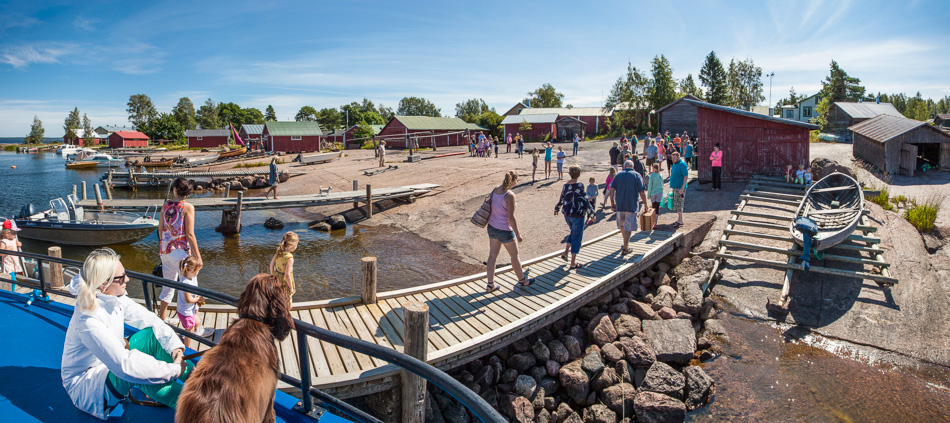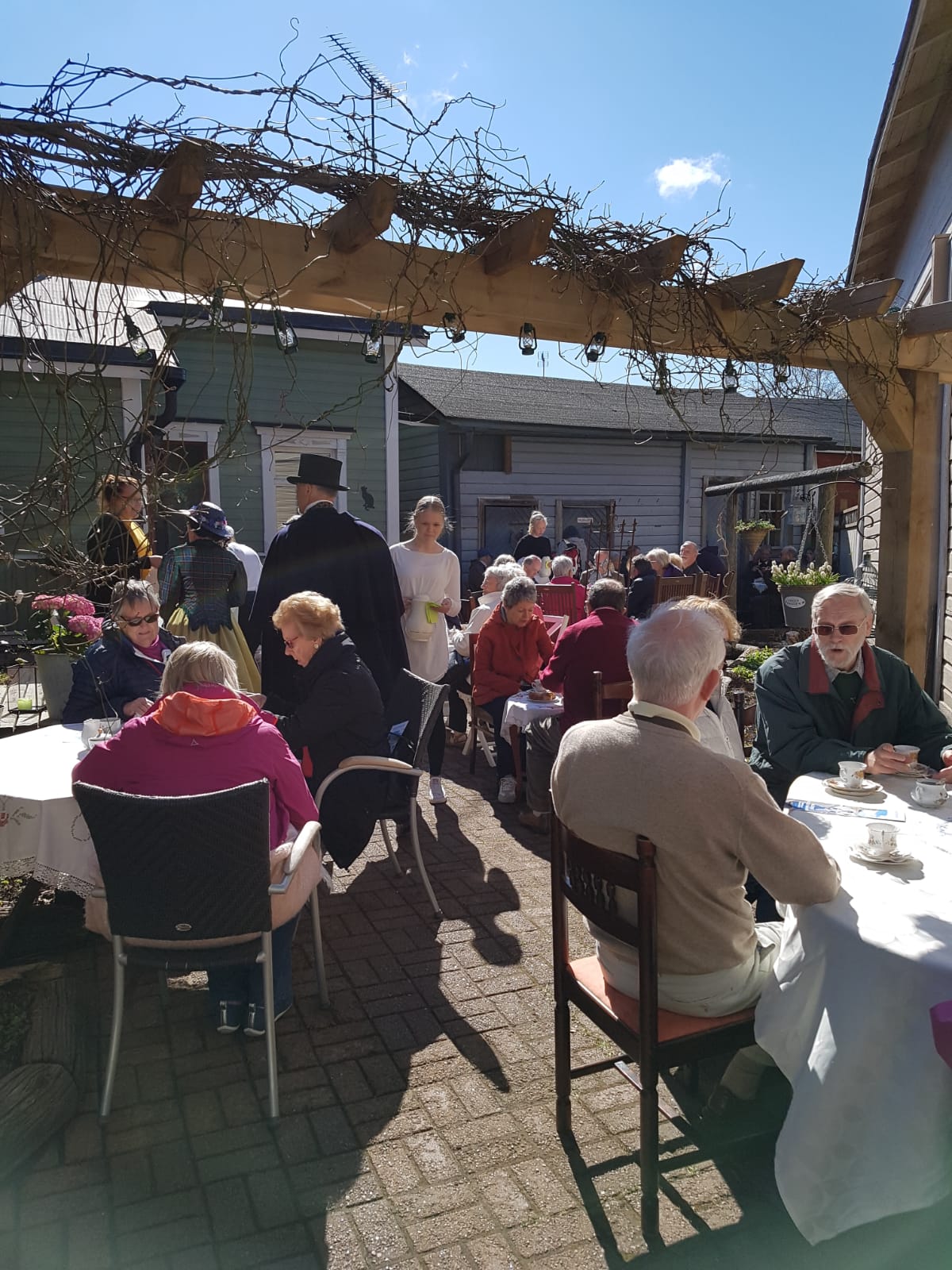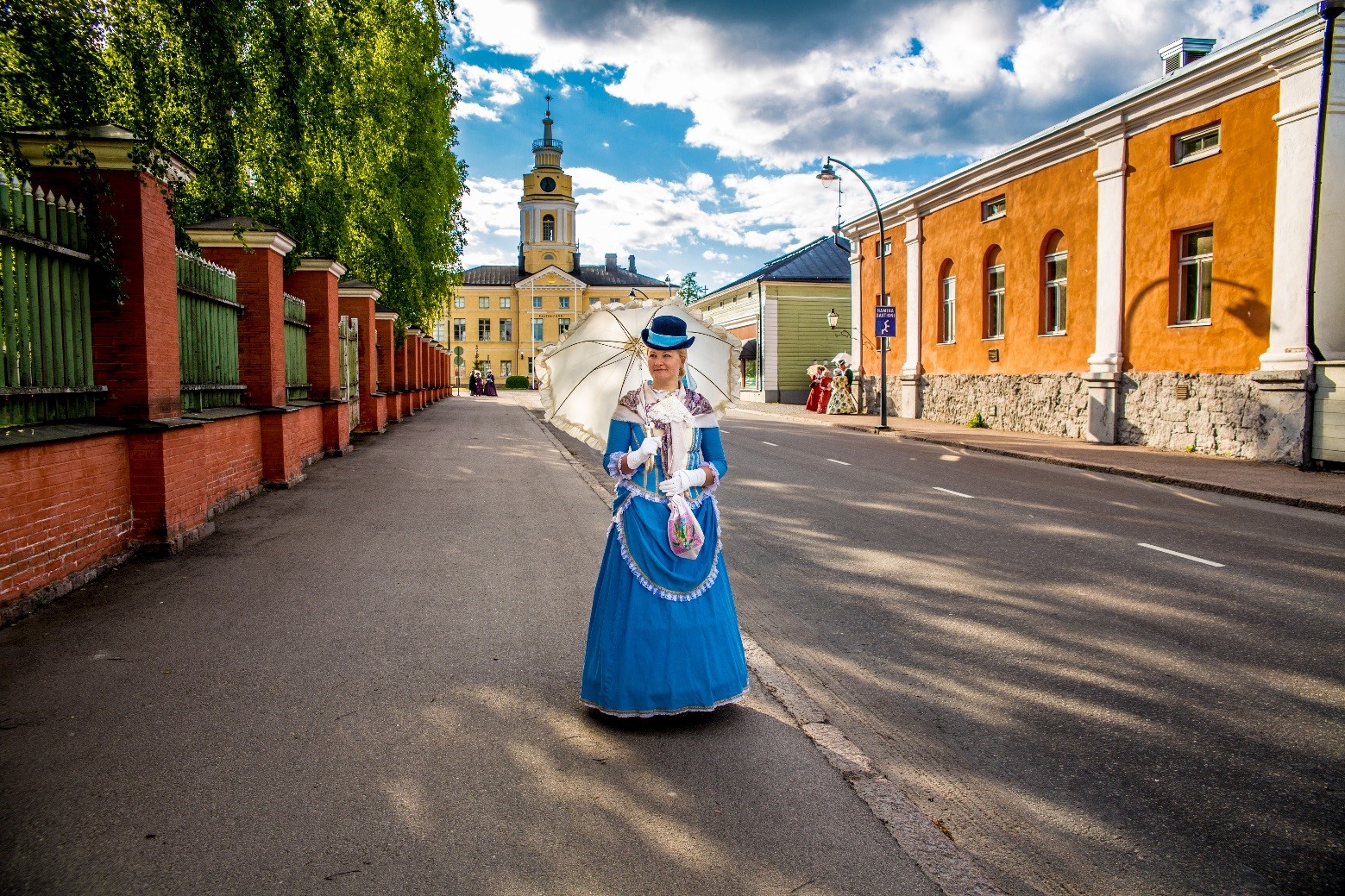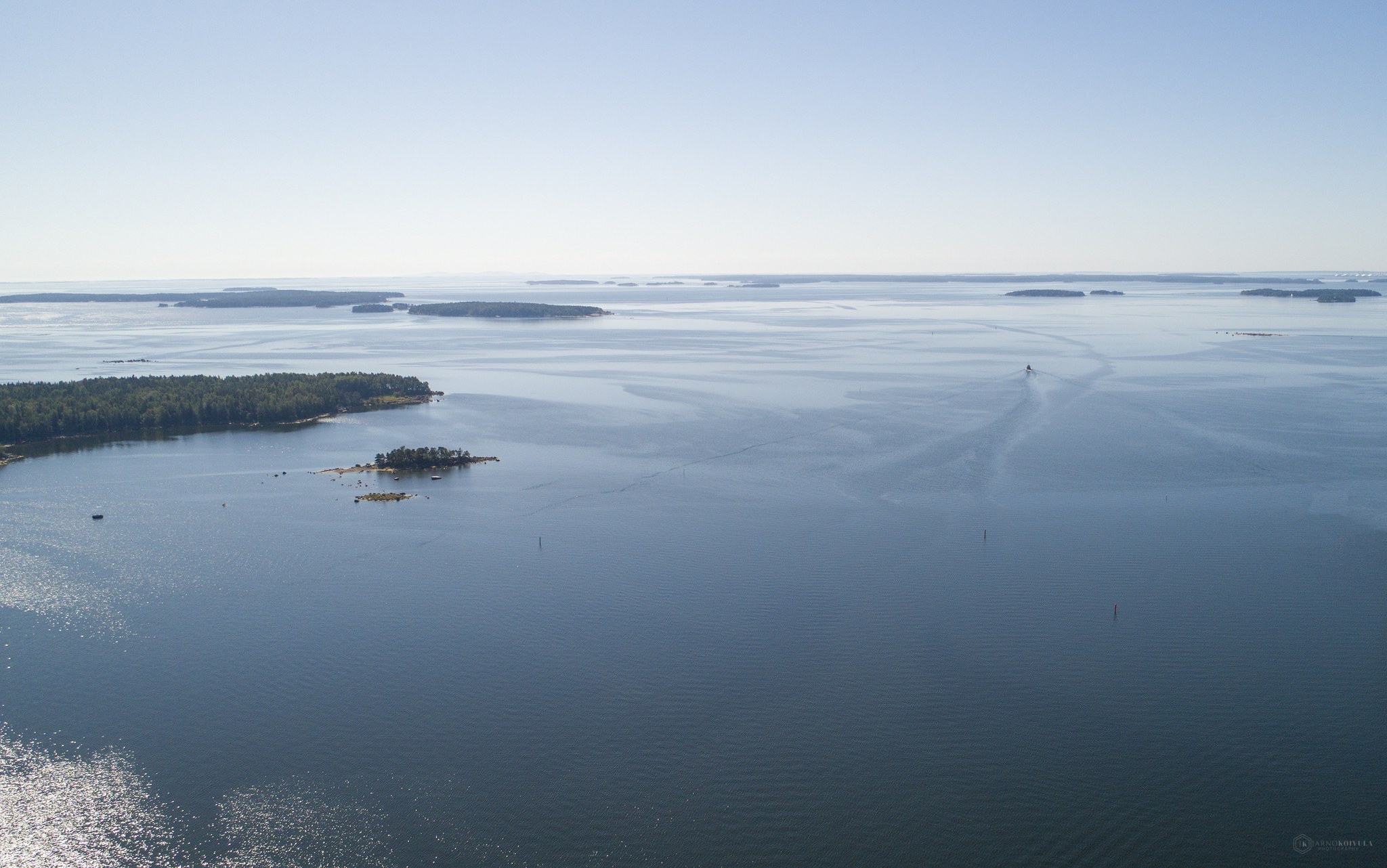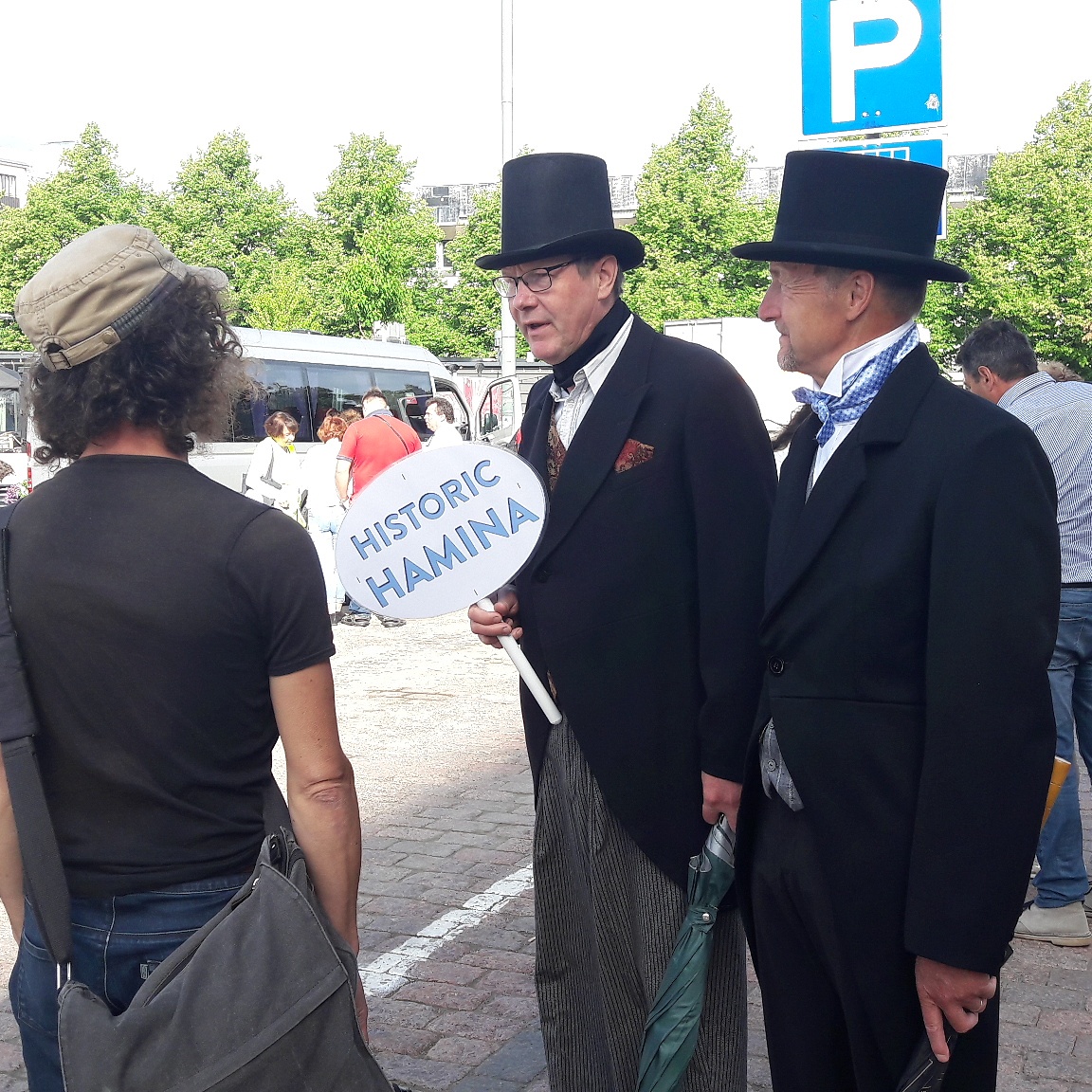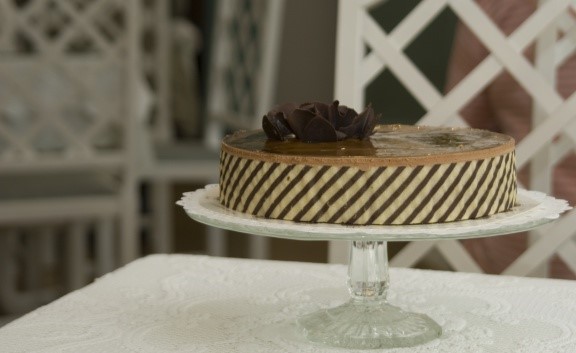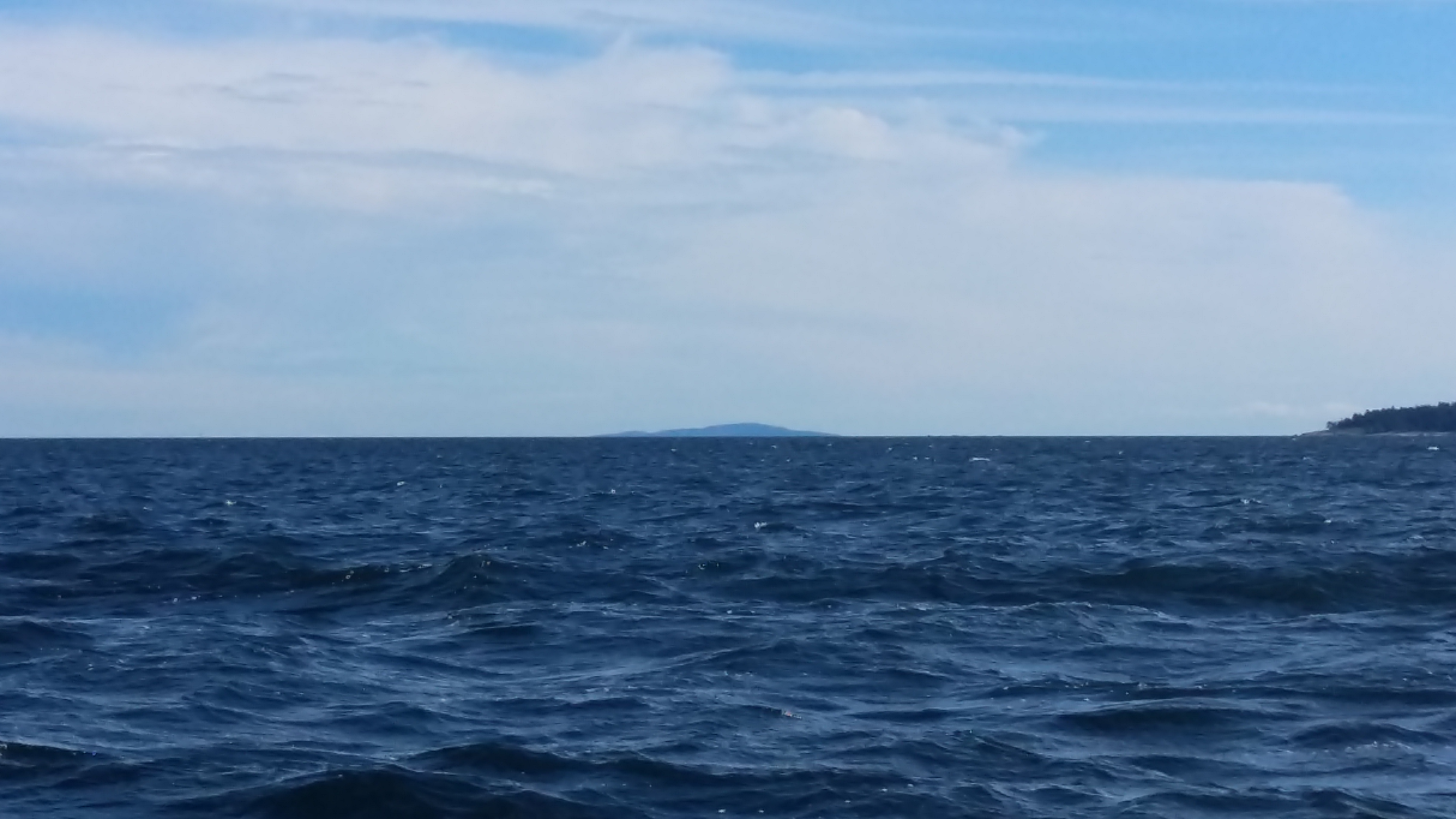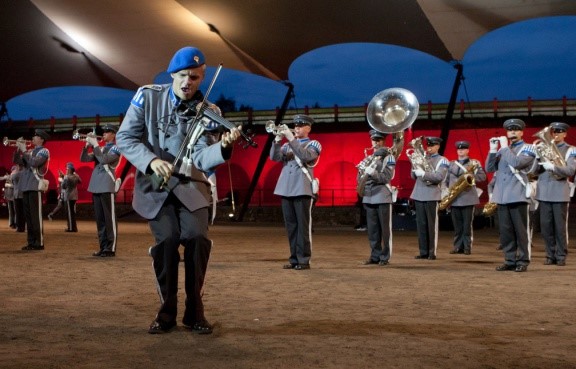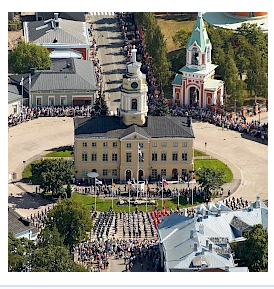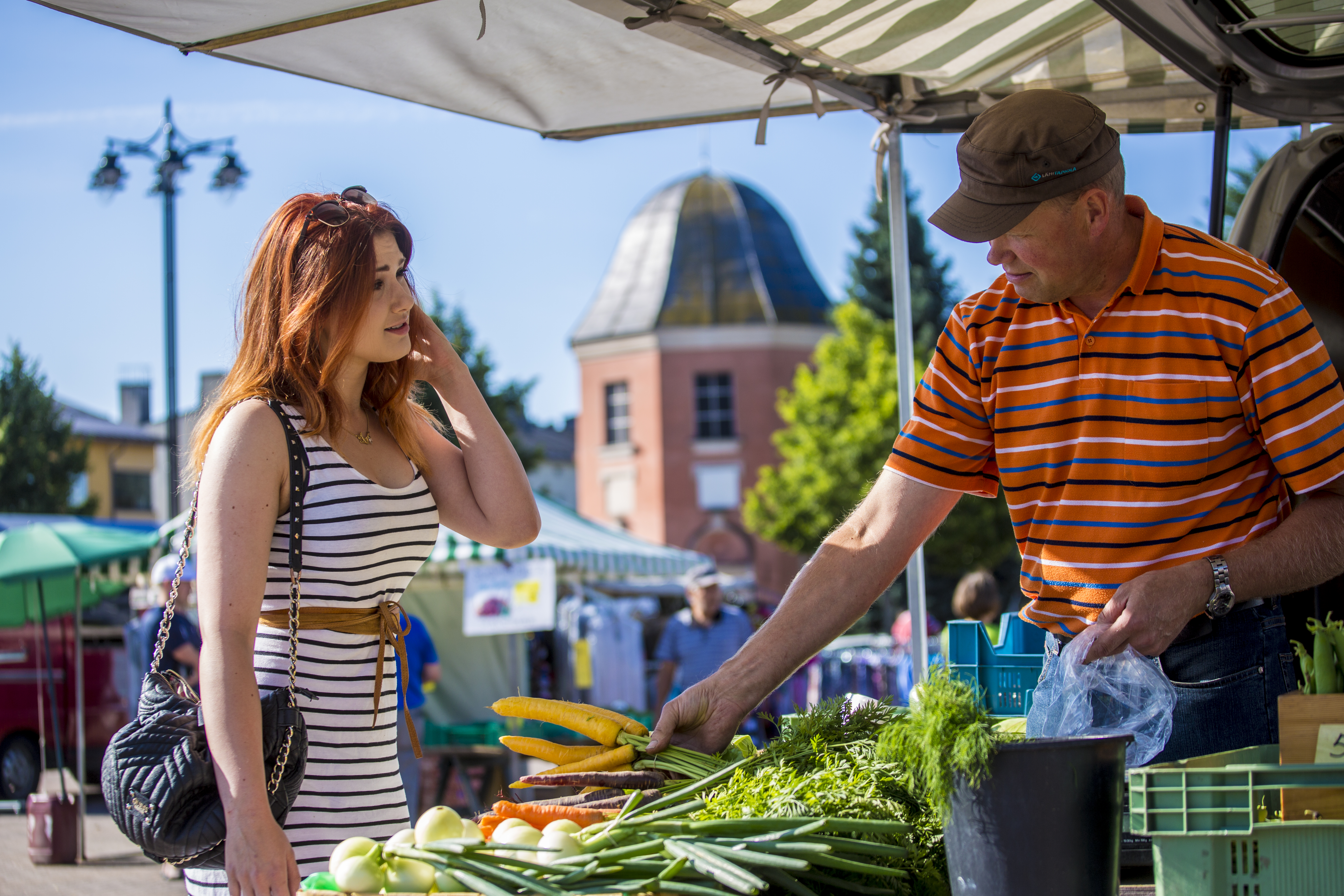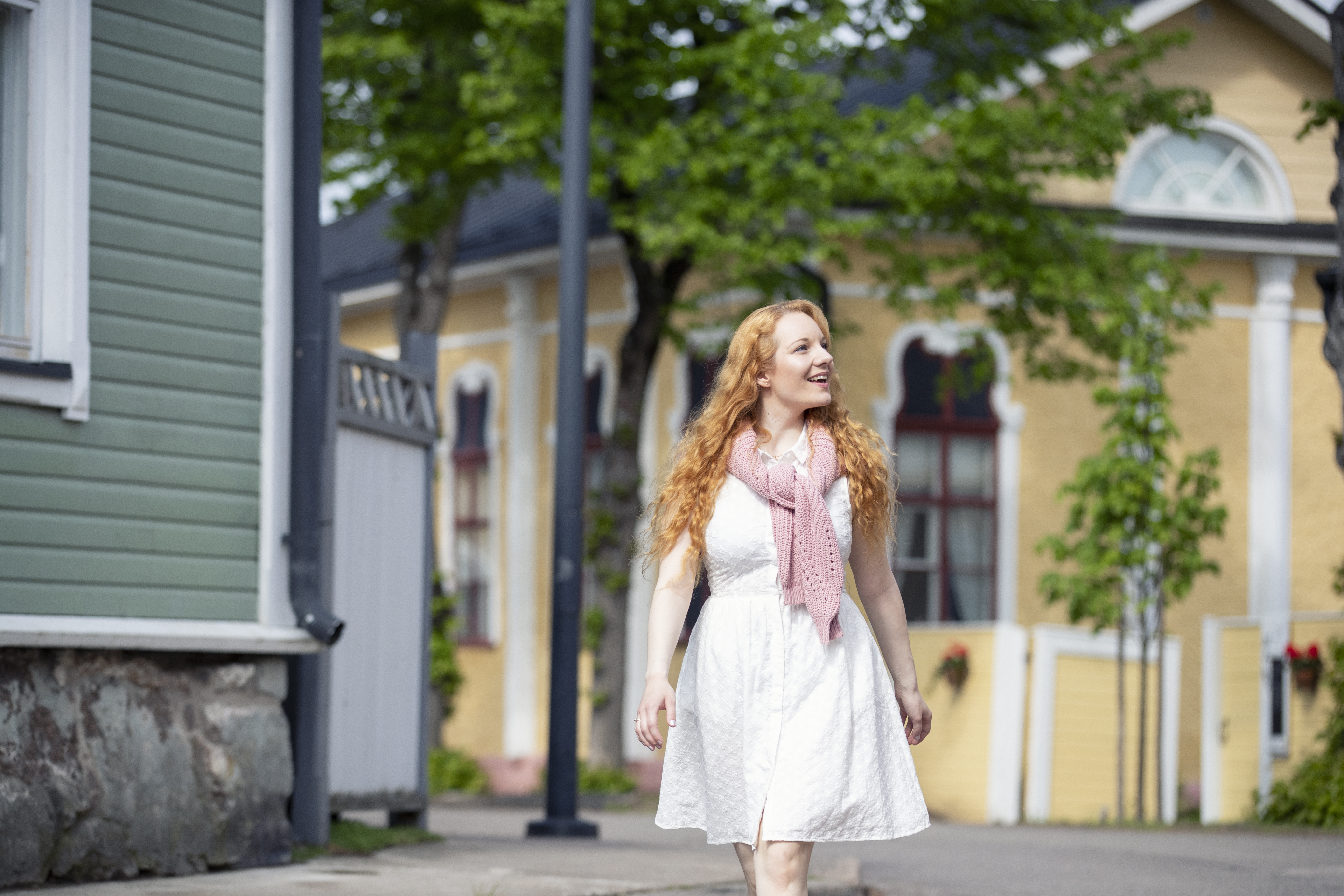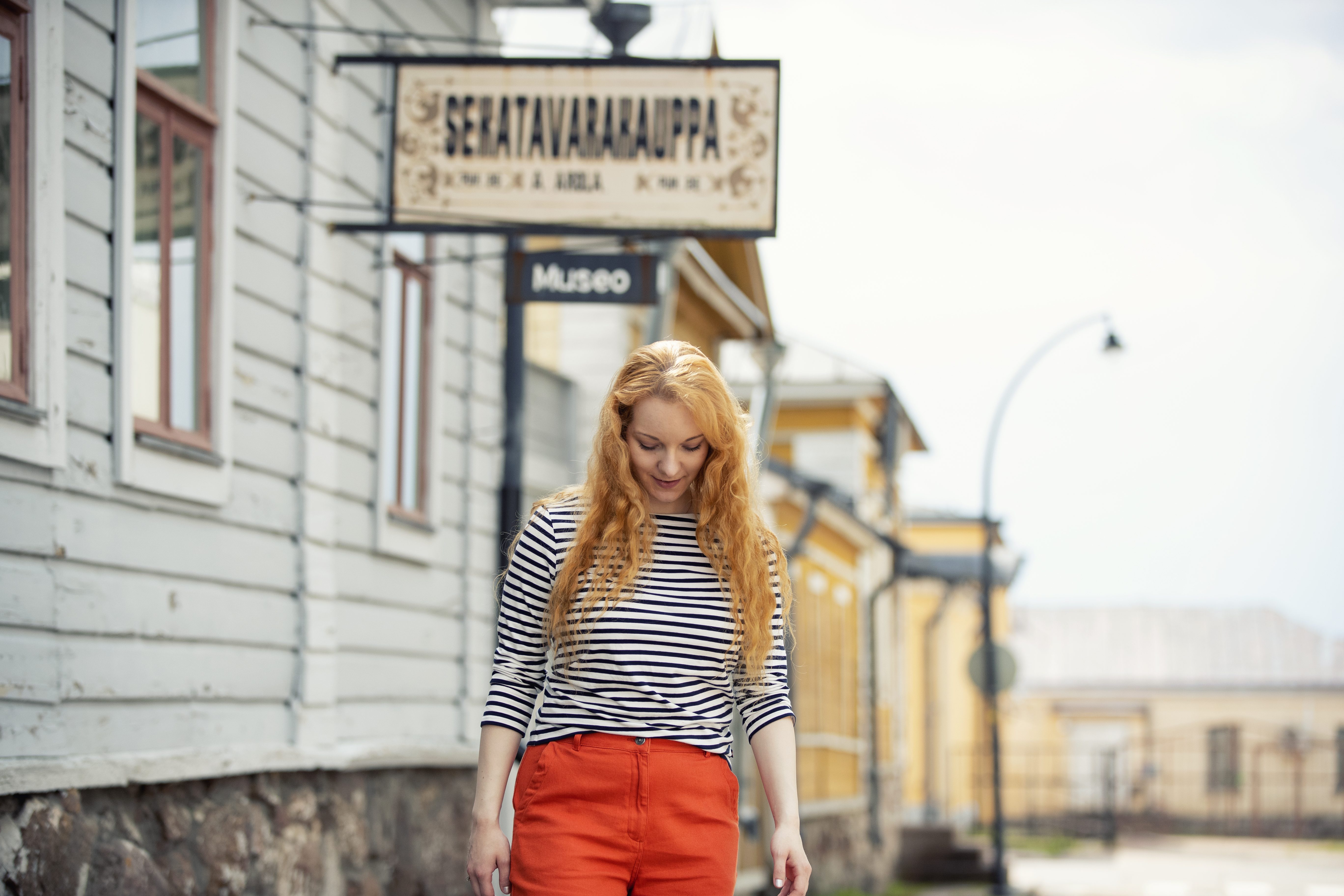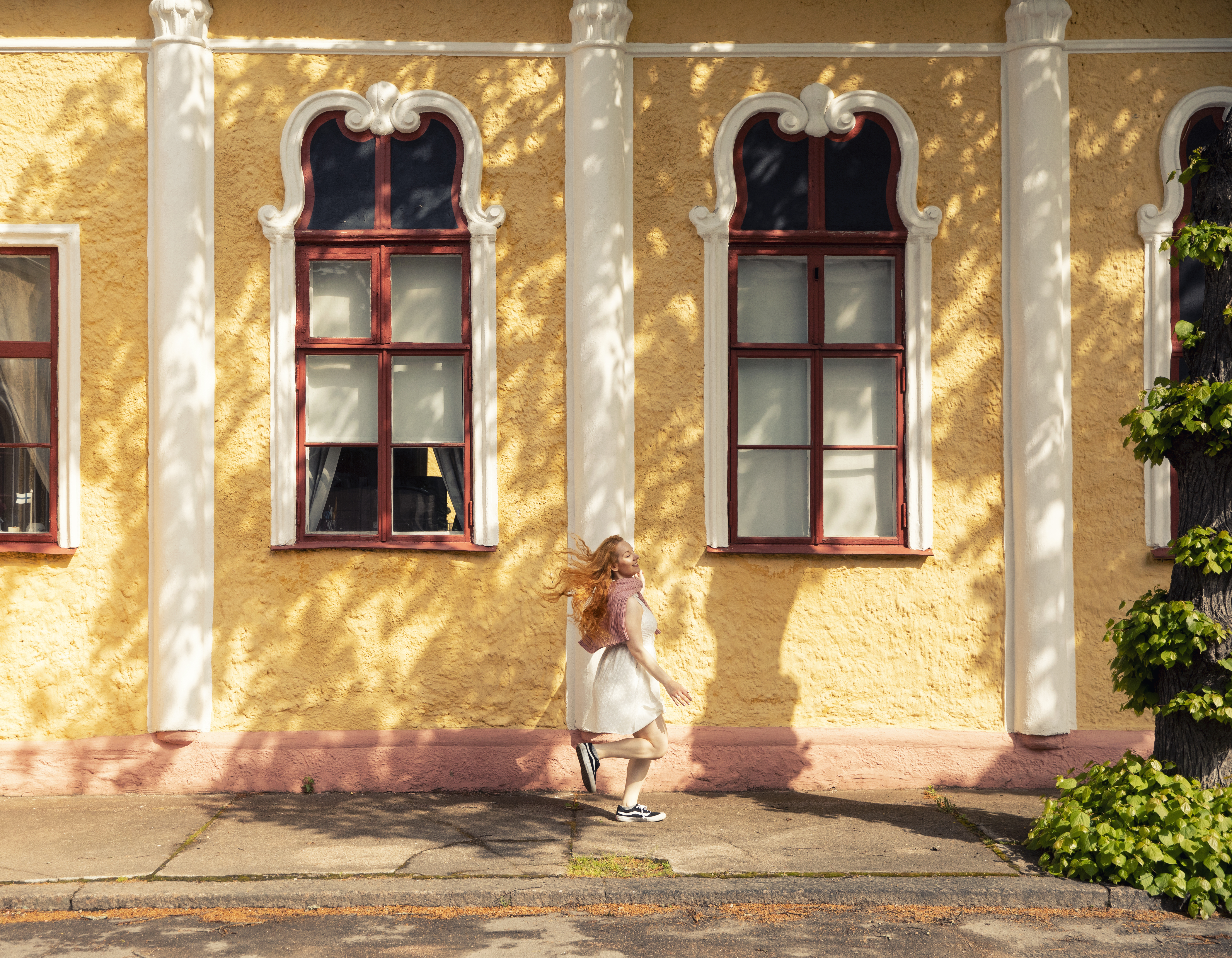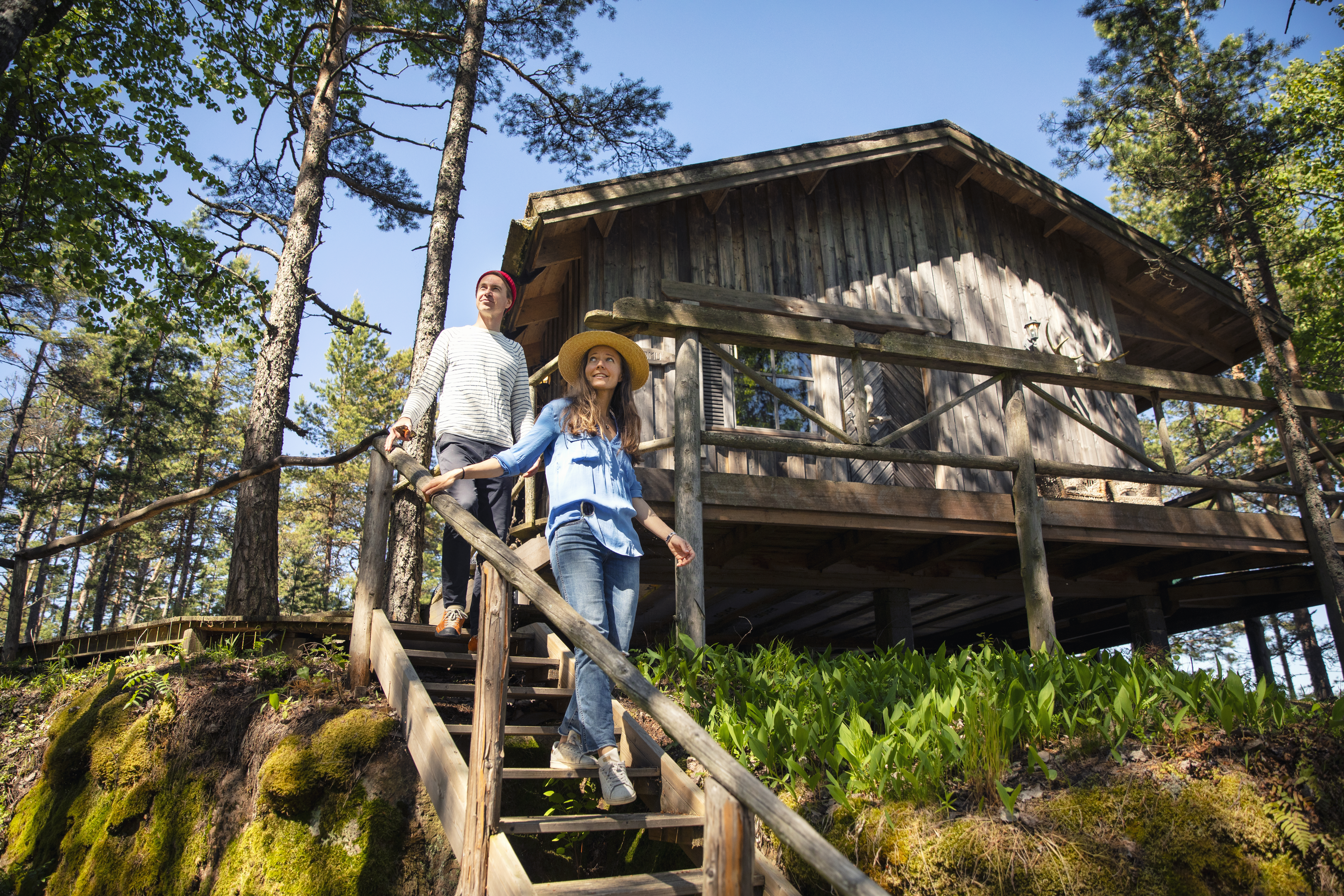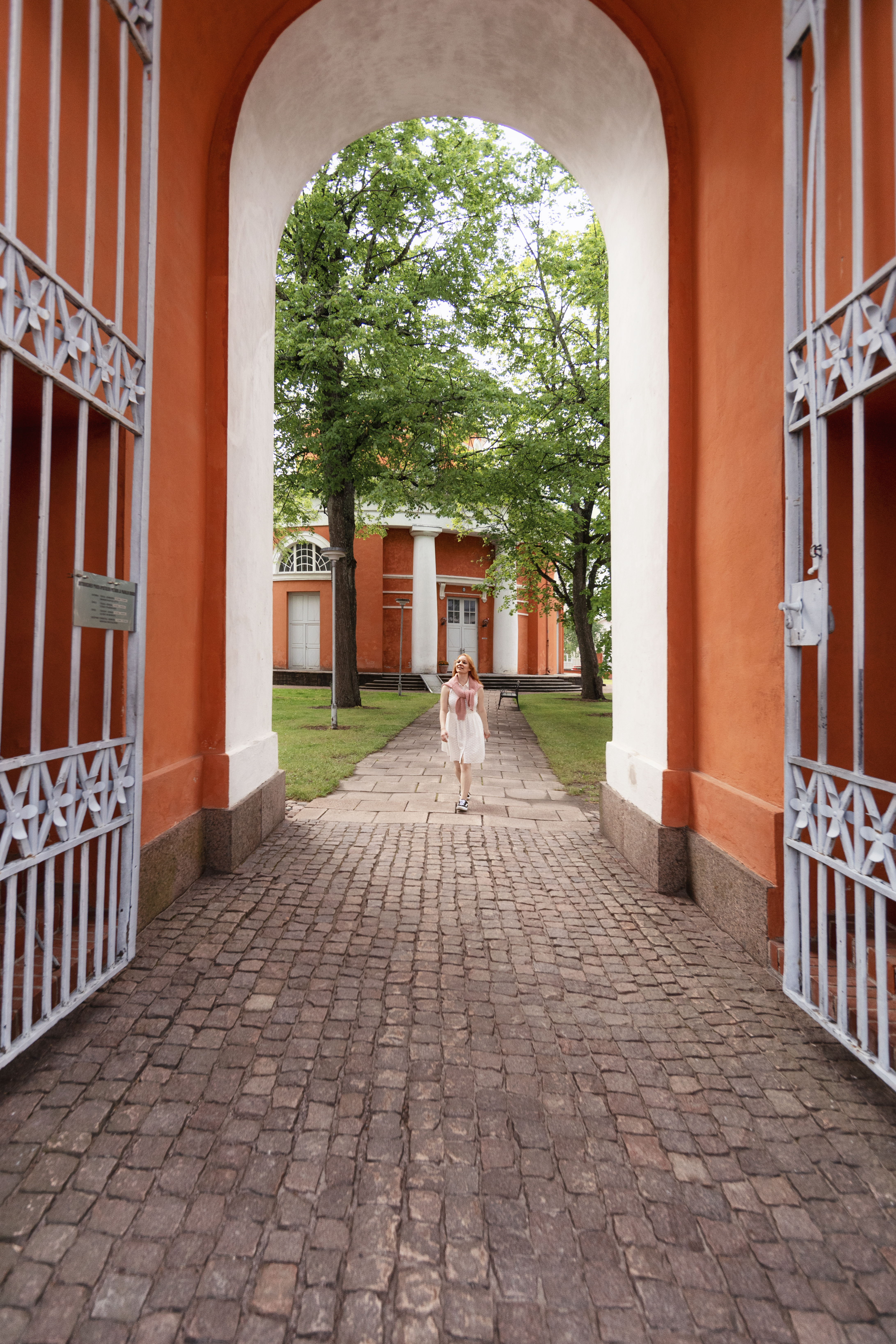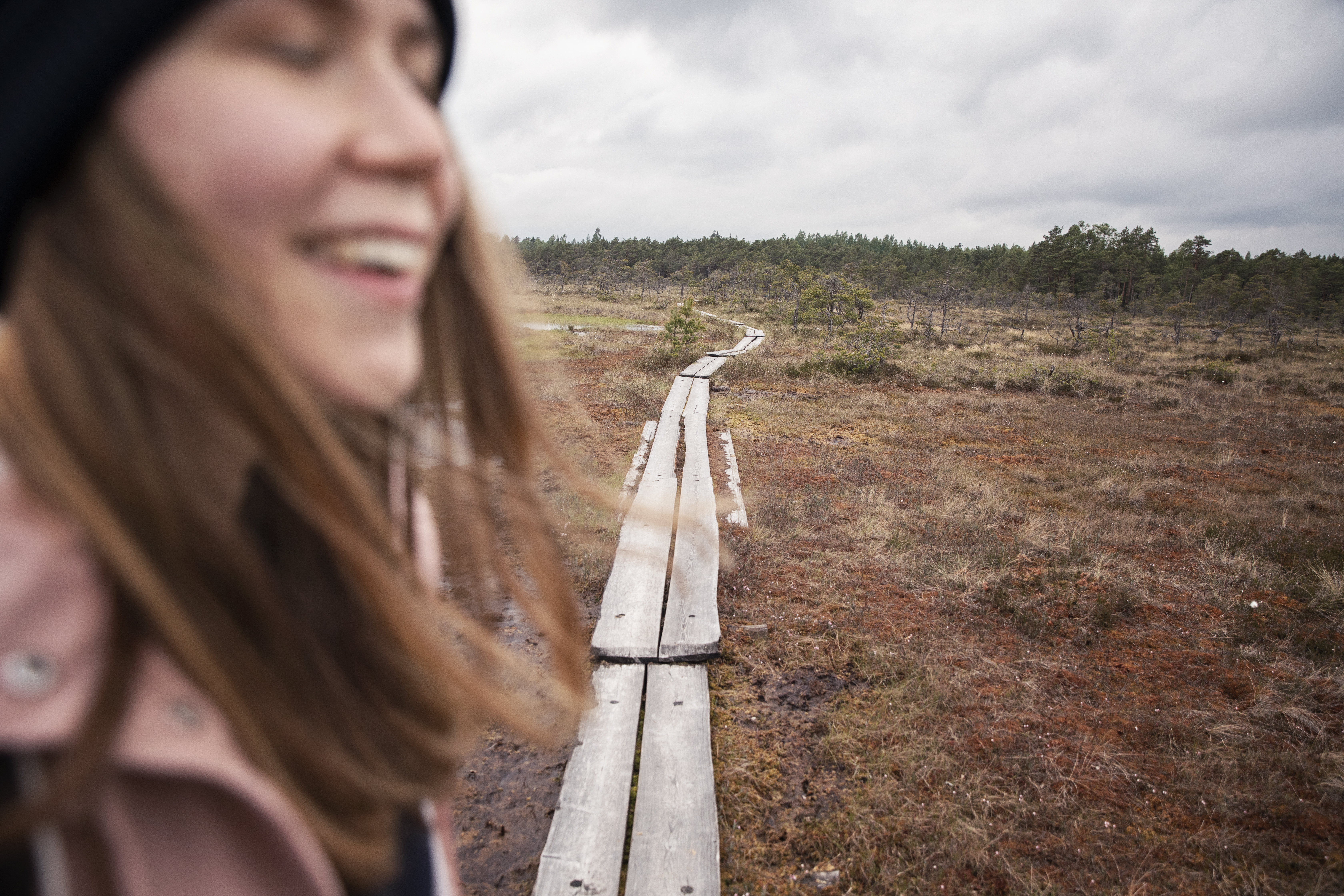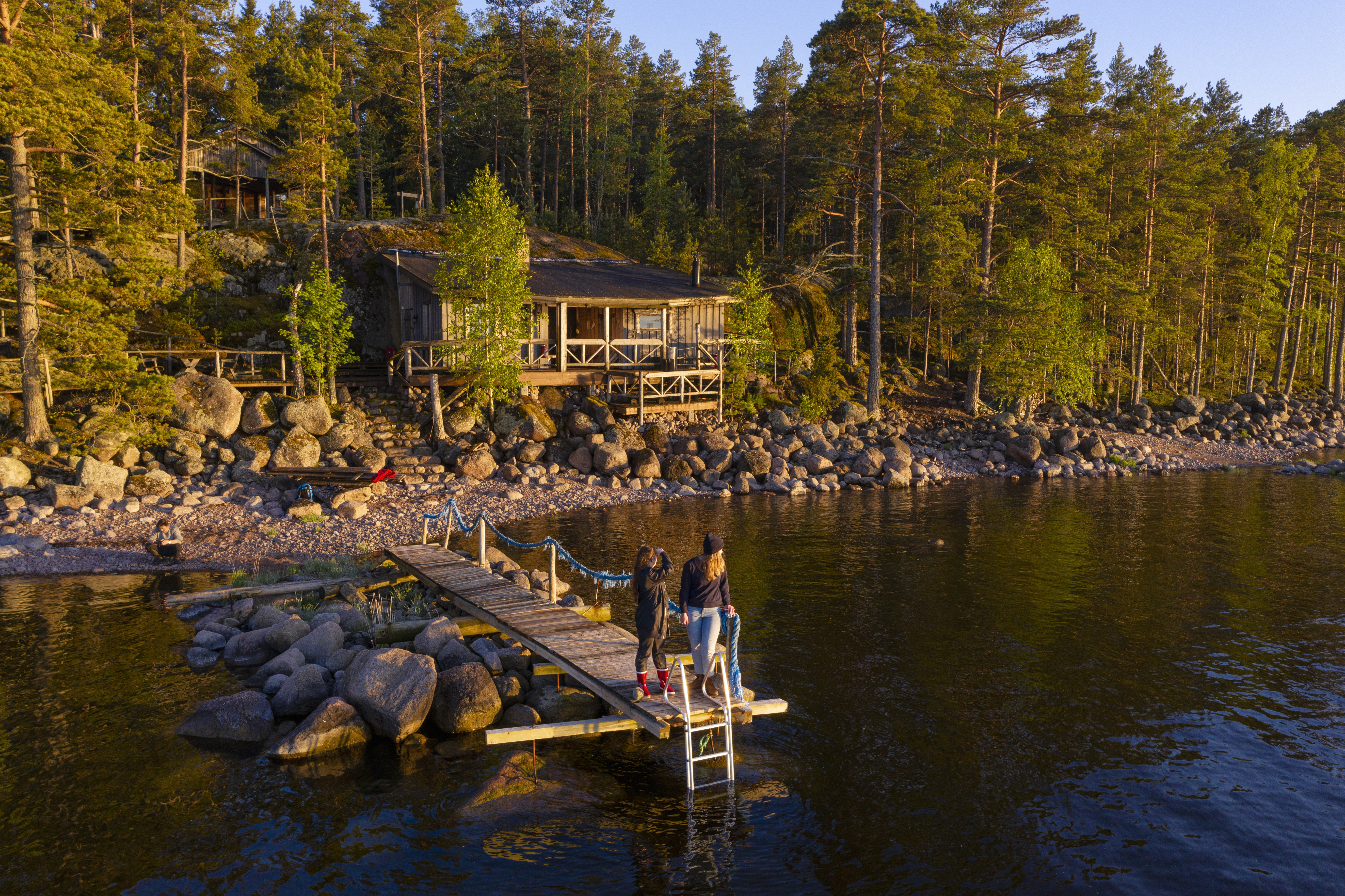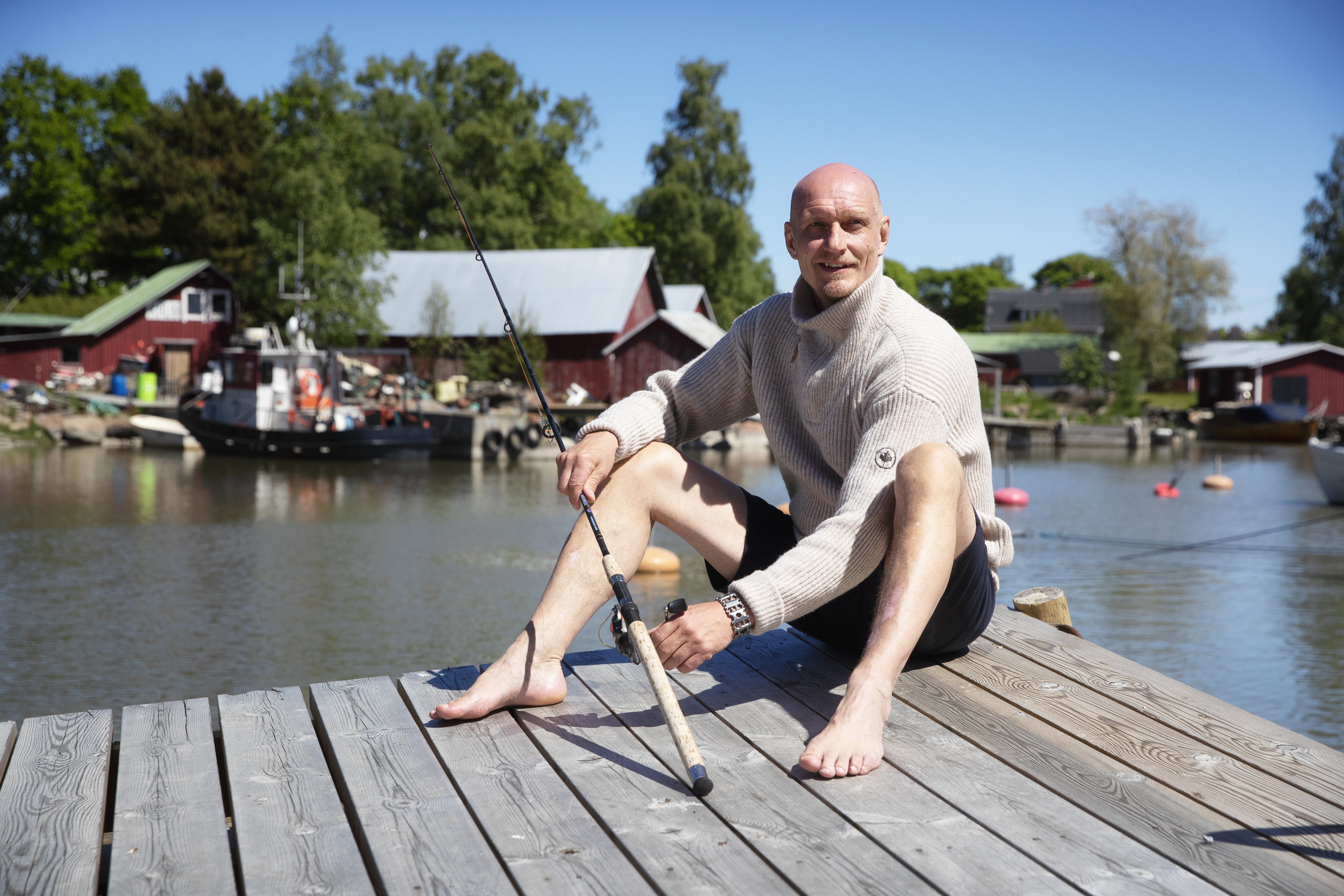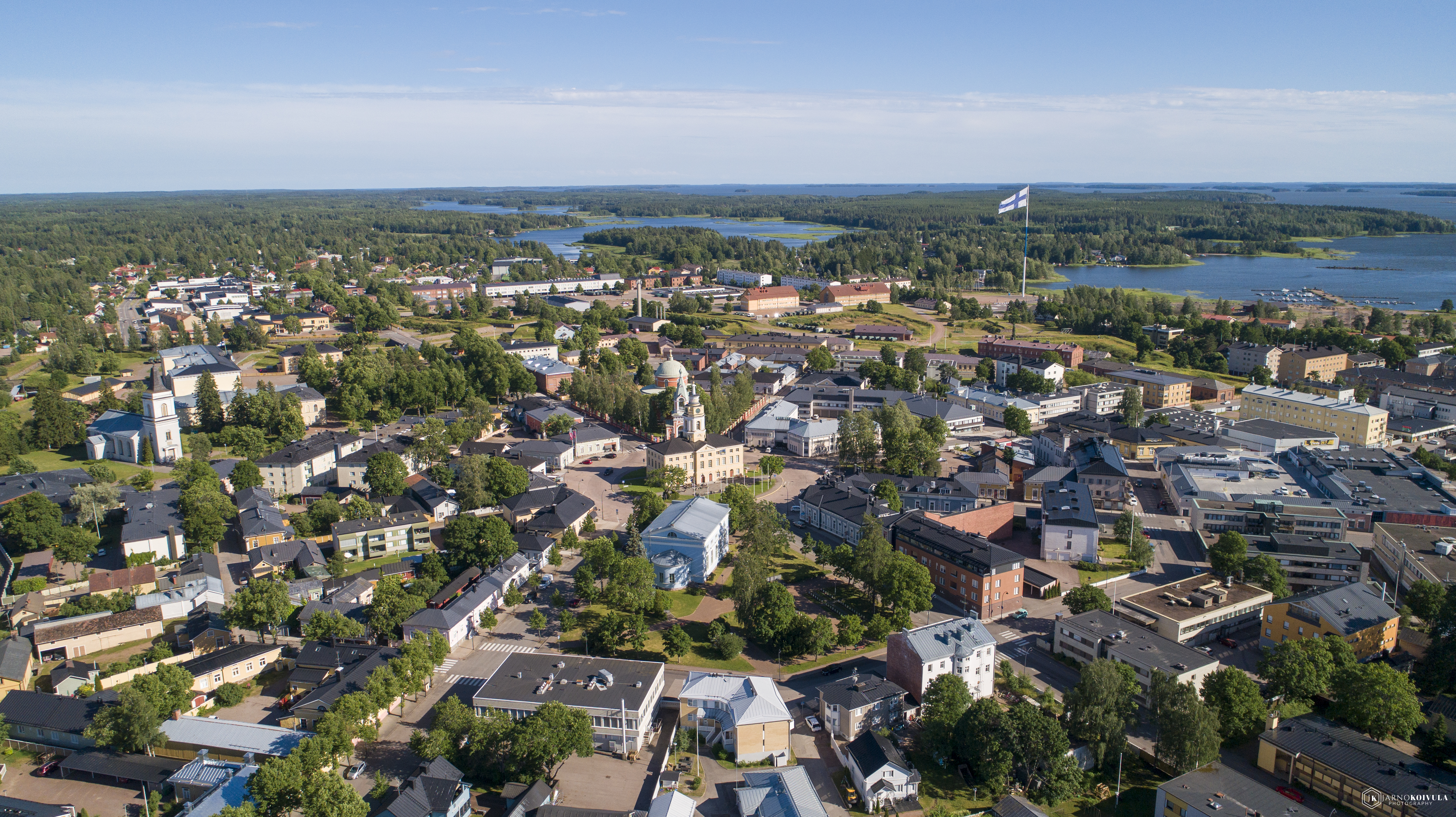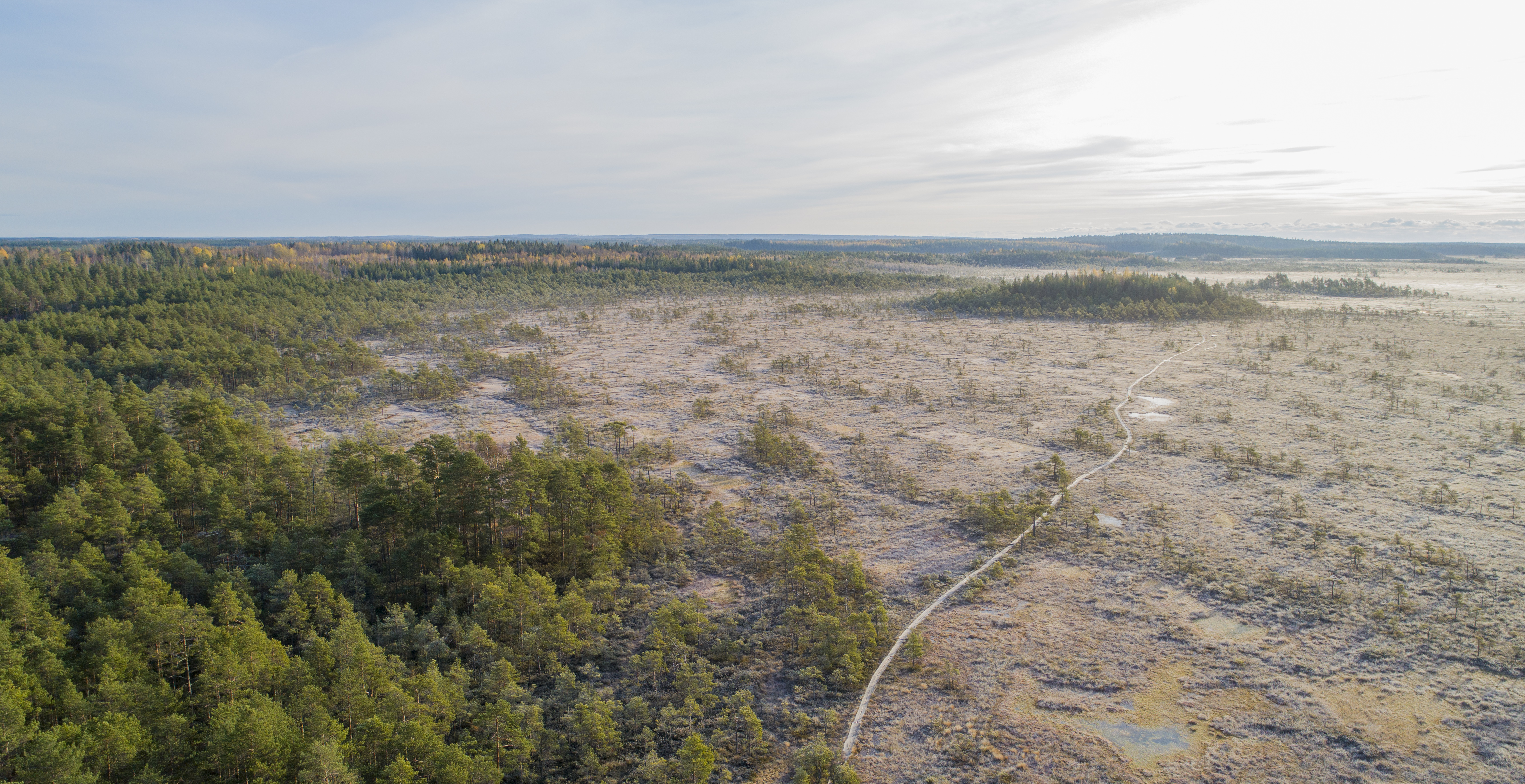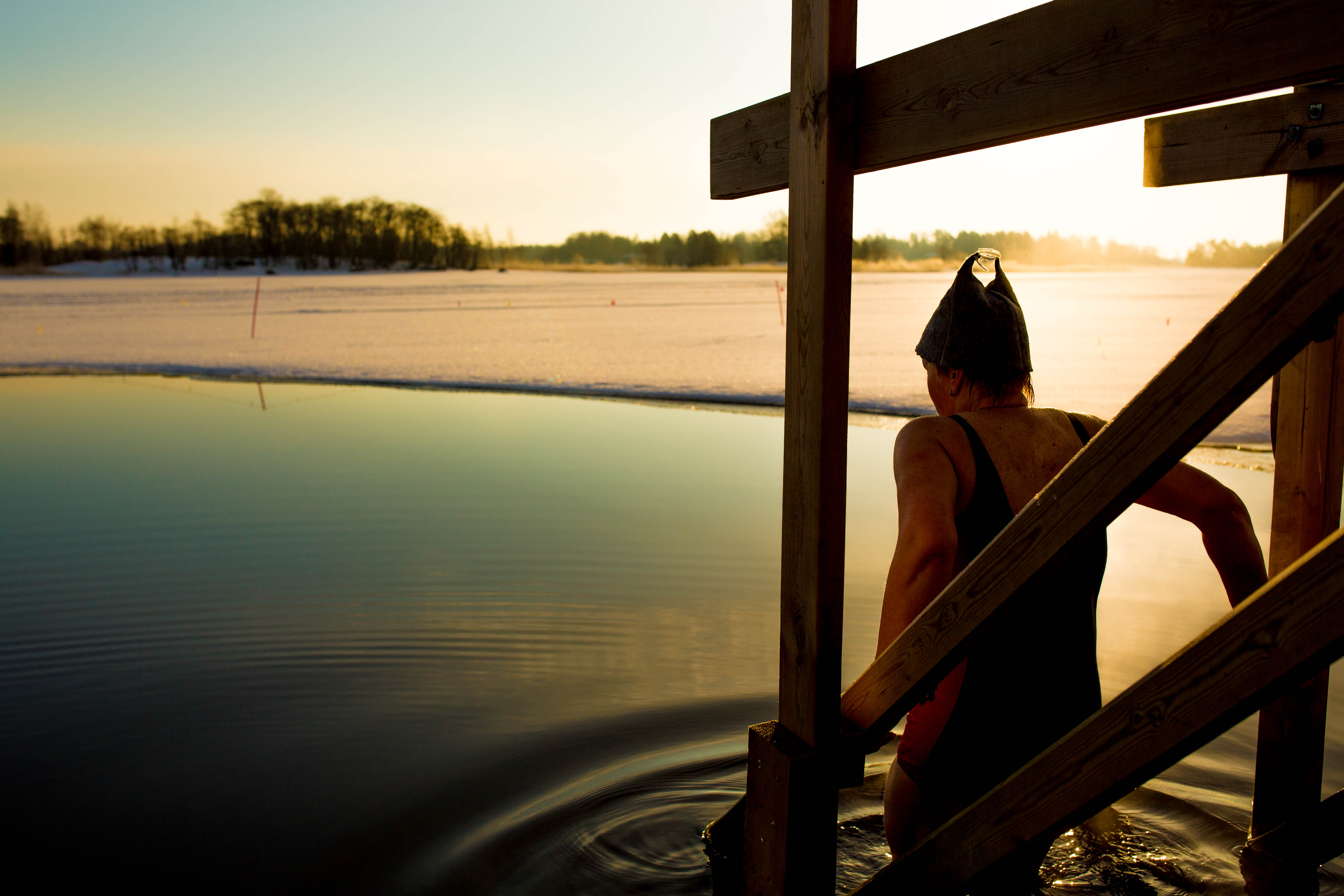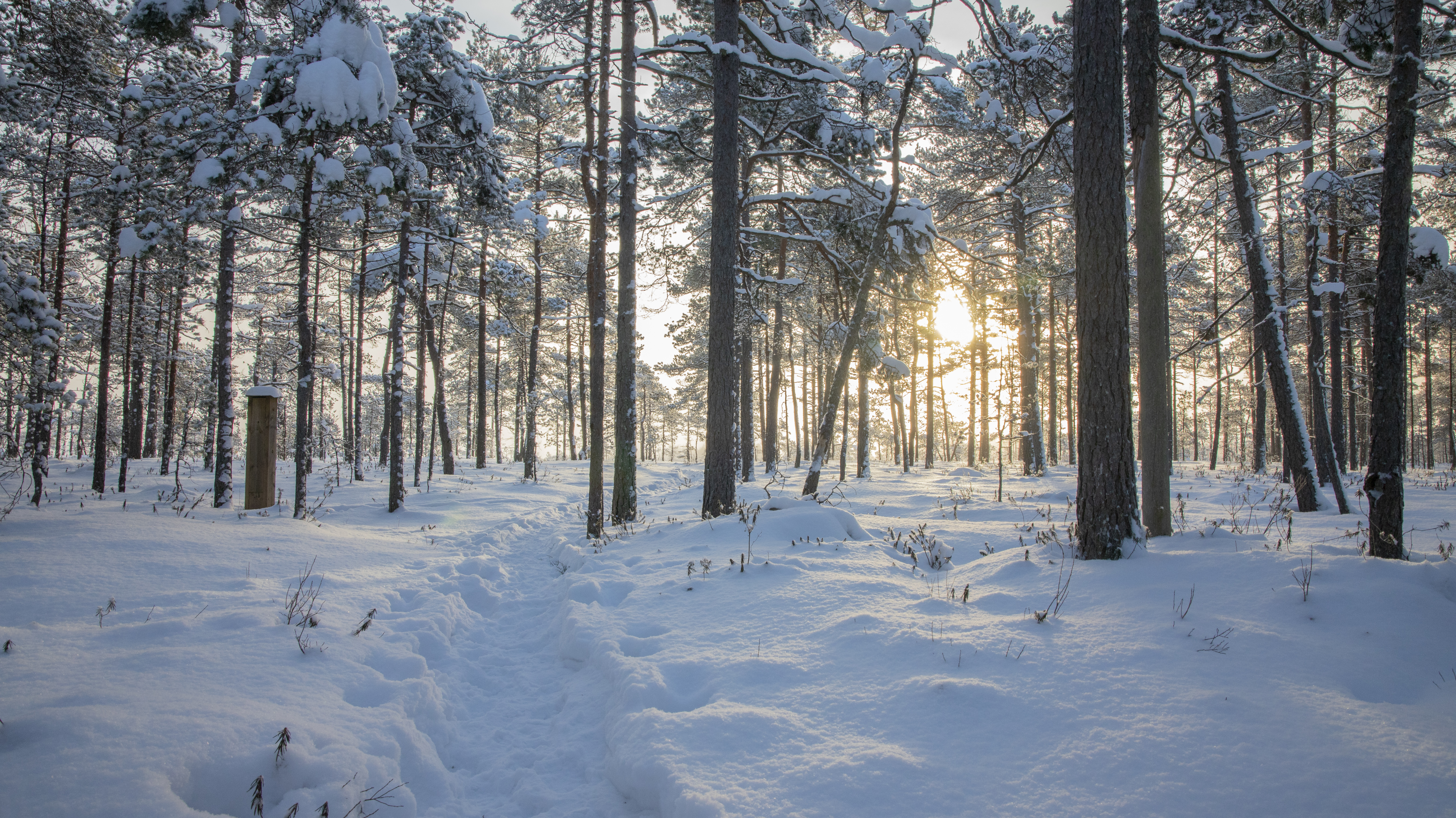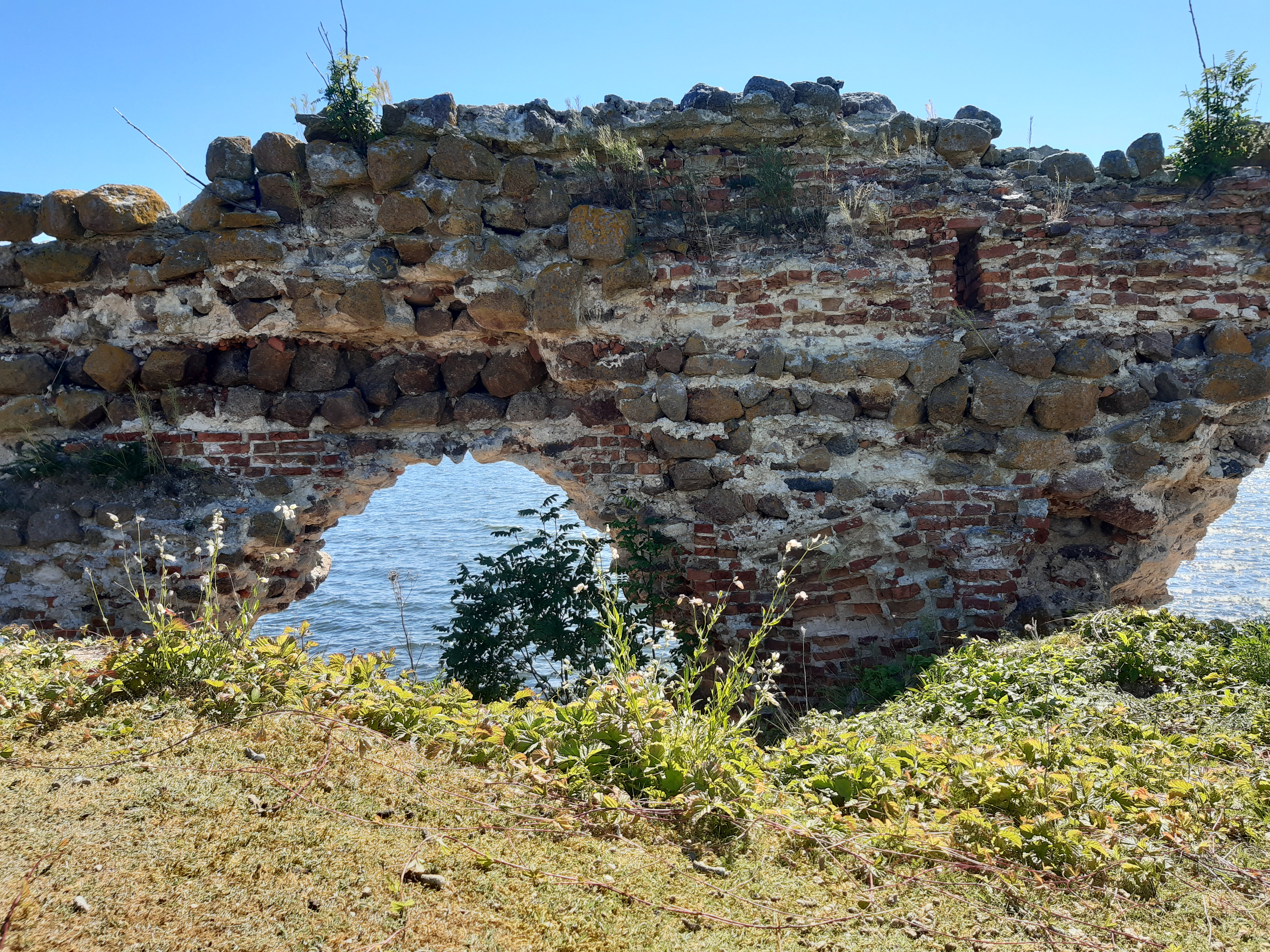 Circular town centre and fortressThe sights along the circular streets of the old town centre are all close to one another. Hamina and its history can be viewed more broadly from the ramparts of the fortress surrounding the centre.
Circular town centre and fortressThe sights along the circular streets of the old town centre are all close to one another. Hamina and its history can be viewed more broadly from the ramparts of the fortress surrounding the centre.- A flag tower of the fortress commander was built at the tip of the Helsinki Bastion in 1790. The bastion and the ramparts around it were demolished in 1889.
 Hamina Bastion – Central BastionThe Central Bastion built in 1803-1811 is the largest bastion in the fortress of Hamina. Its 58 casemates, i.e. masonry vaults, were originally designed as explosion-proof storage facilities.
Hamina Bastion – Central BastionThe Central Bastion built in 1803-1811 is the largest bastion in the fortress of Hamina. Its 58 casemates, i.e. masonry vaults, were originally designed as explosion-proof storage facilities. Guard buildings of the fortressAccess to the fortified Hamina was possible through three gates provided with booms and drawbridges. There was a guard building at each gate. The medieval highway between passed through Hamina.
Guard buildings of the fortressAccess to the fortified Hamina was possible through three gates provided with booms and drawbridges. There was a guard building at each gate. The medieval highway between passed through Hamina.- The main building of the Imperial Cadet School of Finland, which used to be located in Hamina in 1821-1903. Since 1920, the main building has been used by the Reserve Officer School.
- Tervasaari and Rampsinkari with their visitors’ marina, cafeterias, terraces, museum ships, beaches and picnic sites! Starting point for cruises to the National Park of Eastern Gulf of Finland.
- The River Kymijoki is full of rapids where rapid-shooters, canoeists and fishermen will have unforgettable experiences. River rafting and more easy-going river cruising is a must experience!
 St Mary’s Church and Church MuseumThe medieval stone church dedicated to St Mary is the oldest building in South-Eastern Finland.
St Mary’s Church and Church MuseumThe medieval stone church dedicated to St Mary is the oldest building in South-Eastern Finland.- The Neoclassical church of the Lutheran parish follows the design of Greek temples. The church was built in 1843.
 Orthodox Church of St Peter and St PaulA rare Neoclassical round temple from 1837 with Byzantine influences, designed by the Italian-French architect Louis Visconti.
Orthodox Church of St Peter and St PaulA rare Neoclassical round temple from 1837 with Byzantine influences, designed by the Italian-French architect Louis Visconti.

